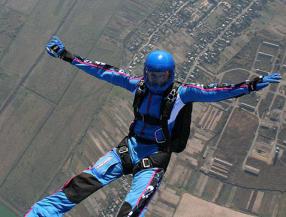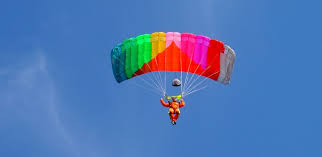Space divers
 Do you want to take off on a small rocket to a height of 100 kilometers, and then jump out of it and in one spacesuit alone overcome all the way to the surface of the Earth? For money. Say – I’m not a suicide. Wait a moment. The authors of this risky venture promise a soft landing – they are developing a system for parachute jumps from space.
Do you want to take off on a small rocket to a height of 100 kilometers, and then jump out of it and in one spacesuit alone overcome all the way to the surface of the Earth? For money. Say – I’m not a suicide. Wait a moment. The authors of this risky venture promise a soft landing – they are developing a system for parachute jumps from space.
One of the leitmotifs of that project was the development of technologies that could be useful in the future when developing means for saving astronauts. The new project has the same goal: first working out safe jumps from the stratosphere, and then …
But let’s start from the beginning. Who are the initiators of new extreme jumps from space?
The first is Rick Tumlinson, an enthusiast in the private rocket industry, one of the founders of the Space Frontier Foundation and LunaCorp, which plans to commercialize the moon. He also participated in the work of the X PRIZE foundation, which became famous for a number of comic competitions and also in the work of some other private space projects.
The second is Jonathan Clark, a former NASA on-board doctor who tragically lost his wife, astronaut Laurel Clark, who died in the crash of the Columbia shuttle.
They created the company Orbital Outfitters with the goal of developing tools for high-altitude jumping, starting with “just great heights” and up to the individual return of a person from space, moreover, at orbital speed, which, however, should not turn a jumping into a burning meteor.
Already in 2009, Orbital Outfitters intends to demonstrate a record parachute jump from a height of 36.6 kilometers; over the next two years, Tamlinson and Clark plan to show the world a man’s jump from a height of 97 kilometers (it is still unknown who exactly will jump), and the ultimate goal of the entire project is the safe return from space with an astronaut’s parachute jump at orbital speed from a height of over 240 kilometers.
Obviously, in the latter case, a person will need a very fireproof spacesuit. But even jumping from lower heights is not an easy task. Nevertheless, partners are thinking not only about the means of saving the astronauts, but also about an unusual business.
Imagine that you are climbing a suborbital trajectory on a small open rocket-chair (something like this). At a hundred-kilometer height, you contemplate the black sky and stars, the planet under your feet and … leave the chair. Then you fall to the ground yourself, of course – in a special suit.
During the fall, your speed reaches 4 thousand kilometers per hour, so you can’t do without additional heat-protective layers over the suit. When braking in denser layers of the atmosphere, the overload will reach 4.4 g, and the surface temperature of the suit will jump to 240 degrees.
Having flown a decent distance, you release a small brake parachute, and the speed drops to 200 kilometers per hour. And at the height of one kilometer, after seven minutes of spectacular fall, you open the most ordinary, main, parachute and gently fall to the ground.
Surely there are daredevils who will be ready to pay a round sum for such a jump.
Here it must be added that in terms of traveling up Tamlinson expects his acquaintance with the famous creator of the Doom game John Carmack (John Carmack) and his space company Armadillo Aerospace.
How real is all this? NASA engineer Robert Manning (Robert Manning) argues that there are no fundamental prohibitions on such a system. Although it will be very difficult to build a really working superspace suit to return to Earth. For example, the big question is the effect on the body in a spacesuit of shock waves at supersonic.
Here, the authors of the project give a historical precedent that inspires some optimism: in 1966, the SR-71 Blackbird crashed at an altitude of almost 23.8 kilometers during a flight at a speed of 3.18 M (that is, more than three speeds of sound). The pilot Bill Weaver, who fell out of the cockpit, survived, and had no lasting injuries, although a sudden air strike deprived him of consciousness.



